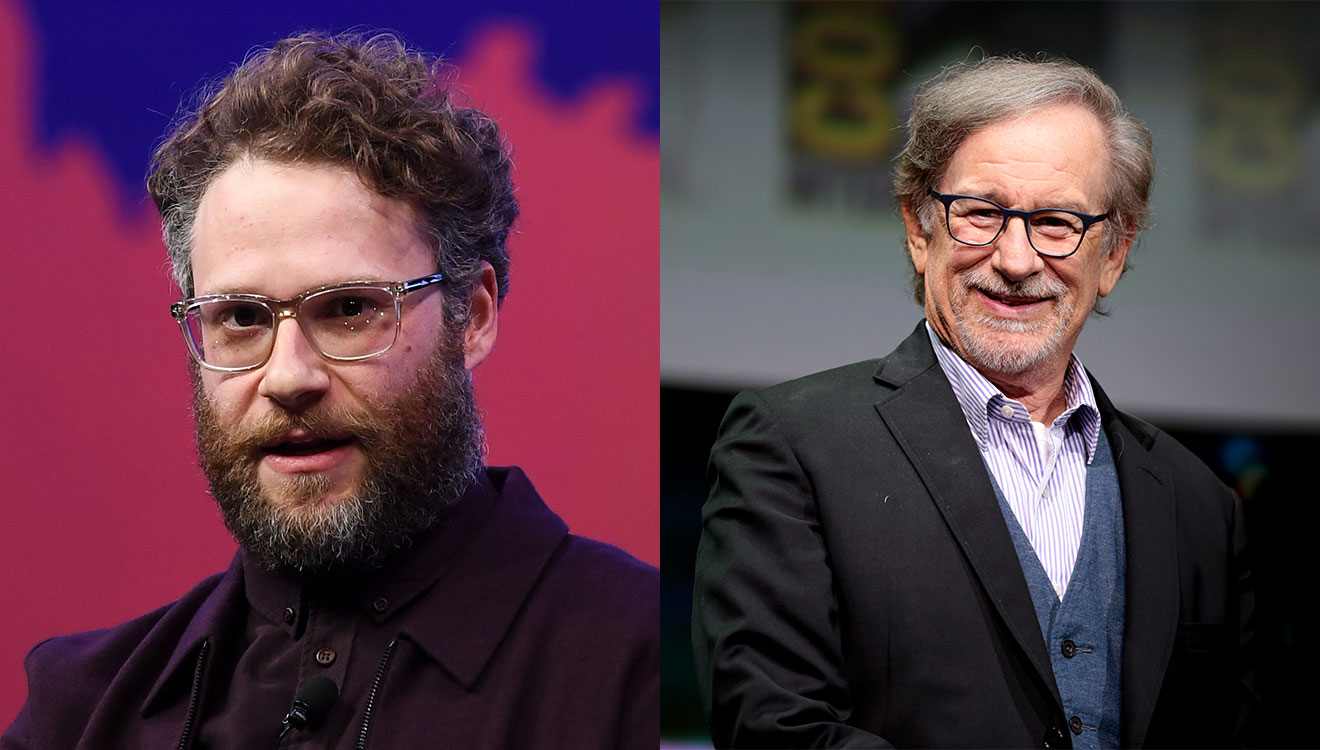It was the dawn of the Soviet-American space race in the 1950s, a period of increasing public distrust of the government. Ever since a “flying saucer” crashed at Roswell, New Mexico in 1947, there was paranoia about classified military bases housing extra-terrestrials. This coincided with other UFO sightings, which had become a cultural phenomenon in the US, and Hollywood capitalised on it with a wave of alien invasion films: The Thing from Another World(1951), The Day the Earth Stood Still (1951), It Came from Outer Space (1953), The War of the Worlds (1953), Invasion of the Body Snatchers (1956), The Blob (1958) among others.
These films fuelled a collective imagination, and not just among the conspiracy-minded ufologists. Over the decades, Close Encounters of the Third Kind (1977), E.T. (1982) and The X-Files (1993-2018) refuelled it, insisting “the truth is out there.”
Andrew Patterson takes us back to the height of ’50s paranoia in his debut feature The Vast of Night. It’s late evening in Cayuga, New Mexico. Virtually the whole town is at the high school, engrossed in a basketball game. Elsewhere in the town, two teenagers, switchboard operator Fay (Sierra McCormick) and local radio DJ Everett (Jake Horowitz), discover a strange audio frequency on the airwaves and team up to investigate its origins. Between dropped calls and flickering lights, between reports of UFOs in the night sky and accounts of alien contact from unfamiliar callers, the two embark on an adventure to unravel the mystery.
The film feels like a time capsule, as Patterson recreates the period down to the tiniest detail, from the high school building to the homogeneous neighbourhood, from the automobiles with Space Age-appropriate tailfins to the period-specific costumes. Fay and Everett are the epitome of ’50s geek chic: the former with her ponytail, poodle skirt, bobby socks and black-rimmed cat-eye glasses, the latter with his combover and Buddy Holly glasses.
The film immerses us in its world and time alongside the characters by appealing to more than just our sense of sight. It’s as much a cinematic experience for the listener, as it is an auditory experience for the viewer. There are even segments where the screen fades completely to black so the audience can focus only on what they’re hearing: words and sounds. When an army veteran calls in to the radio station with a story about a possible extra-terrestrial cover-up conspiracy, Patterson seems to be inviting the audience to participate actively in the visualisation process, with the voice heard acting merely as a guide. Images and emotions of a scene are conjured through the act of suggestion alone. By letting each viewer imagine the story and setting, the act of listening becomes a personal experience.
As the existence of aliens owes more to our imagination than reality, Patterson stages the film like a radio drama. It brings to mind Orson Welles’ radio adaptation of HG Wells’ War of the Worlds, which (legend has it) sounded so real it sparked a mass panic among listeners who believed Martians had actually invaded Earth. By integrating the codes inherent to the mediums of radio and film, the film gives us a clever new hybrid even if the plot is a summary of recycled concepts. When an elderly woman recounts the town’s history of stranger things, the camera closes in on her face to convey a specific emotional context to the story. The same holds true in a sequence where Fay begins to field a series of calls from distressed townsfolk. There’s a chilling psychological intensity to these scenes, which can’t be perceived through audio alone.
Fittingly, the film doesn’t open with images, but music. After all, what you see in the film is not as revealing as what you hear in the vastness of the night. A guitar-driven rebetiko tune plays before the first images show a camera closing in on an old TV set playing a Twilight Zone-like anthology series called “Paradox Theater”. Even its narrator sounds like Rod Serling, phrasing, intonation and everything. Tonight’s episode is “The Vast of Night.” Now, the camera syncs with the TV screen and a sepia tone bleeds into the fuzzy black-and-white images, before filling the screen. We are no longer watching an episode on TV, we’re in it: Cayuga’s high-school gym to be precise. But Patterson takes us in and out of the TV set at regular intervals to keep the audience at a distance. This becomes a jarring experience after the first time.
In the opening sequence, when the camera follows Fay and Everett through Cayuga, from inside the high school to the parking lot to the deserted streets, it not only feels like we’re trying to catch up to them, but always trying to traverse from the unknown to the known. As Fay and Everett geek out over futuristic visions of radio controlled cars and vacuum tube transportation, we realise Fay is a believer, Everett a sceptic, like a young Mulder and Scully with roles reversed. Both are intelligent, curious teenagers, eager to escape their small town for a brighter future elsewhere. Only, it’s the 1950s and the best job Fay can hope for is to work on a bigger switchboard. A UFO sighting in their dull town offers them not just an opportunity for adventure, but a chance to make sense of the world they live in and glimpse into the future. But you can’t help but wonder if the film would have been far more interesting if Fay was the sole protagonist, a character isolated from the rest of the town amidst an invisible, inexplicable threat.
Recommended
The threat of course doesn’t come in the form of some CGI alien. Light on special effects, the film is a remarkable execution of low-budget, economic storytelling. Similar to a radio drama, it builds tension by varying the pace of the action with a combination of short and long scenes. The longer scenes are used to establish the setting and introduce the characters; the shorter scenes to build a sense of urgency. M.I. Littin-Menz’s grainy photography also adds to the distance from this real(ish) world. His unobtrusive camerawork reminds you of Richard Linklater’s Slacker. In an extended “how the hell did he pull it off” tracking shot, the camera begins a recon mission through the quiet town as Fay and Everett wait for callers to respond on the radio signal’s origin: it kicks off from outside the switchboard office (where Fay is smoking a cigarette), races along the streets, cuts across a field, swerves into the school parking lot, manoeuvres through a basketball game, circles back and exits through a window before it heads at breakneck speed to the radio station (where Everett is outside also smoking a cigarette).
Despite the recycling of old sci-fi tropes, The Vast of Night is more than just another exercise in nostalgia. It takes us back to an era where communication travelled at a different speed to today. Though it is far from perfect, it makes for a promising show reel from an emerging voice in sci-fi. Consequently, it proves what sci-fi has always been about: ideas, not spectacle.



